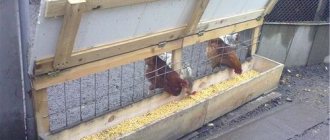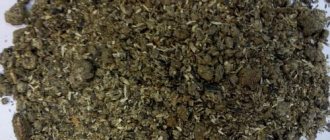A humane way to capture underground animals
The myth that moles are vegetarians is not true, since their main diet is insects or mice, and the mole family can harm crop growth by digging a network of passages and holes in fertile soil.
Mole traps come in several variations. If the pest infestation in the area is small, then humane options, such as homemade plastic traps, are suitable to solve the problem.
Popular live traps
Operating principle of the device
If the mole has already moved in, then repellers are unlikely to have an effect. Subterranean animals that prefer silence become accustomed to the noise of windmills constructed from polypropylene bottles or low-frequency signals from ultrasonic devices.
You can save money, time and preserve the harvest using live traps.
Easy-to-make devices are useful for fighting moles in small areas: in the garden, garden, near the house.
Plastic bottle trap
In specialized stores you can find a trap in the form of a plastic pipe. You can make homemade mole traps that are identical in functionality with your own hands. The operating principle of a purchased one will not differ from a home-made trap.
The mole catcher resembles a small piece of pipe, designed to fit the size of the mole, with doors at the ends that only open inward.
What is required for the device to work effectively?
- You need to put bait in the middle of the pipe.
- If you design a trap yourself, consider the volume of the bottles so that the mole’s body can fit inside.
- You need to install the mole trap correctly.
While picking up a delicious meal in the form of beetles or earthworms, the mole will not be able to get out of the trap on his own.
How to design a trap
Available: plastic bottle fixture
How to make a mole trap from plastic bottles? Making a homemade trap is a little different from a purchased pipe. On portals dedicated to the topic of gardening, you will be able to find the necessary drawings, and before starting work, see what the result should be.
- Take three empty plastic bottles of the same size.
- Using a utility knife or scissors, cut off the bottom and top of the first bottle.
- The remaining two need to be cut approximately in the middle. Only the tops are required for the trap.
- Cut the neck, creating “petals”.
- Place the necks into the body of the main bottle on both sides.
When crawling into such a trap, it will not be a problem for the mole to bend the petal, and after the pest reaches the desired target in the main hollow section, the closed neck will not let it out.
Where to place the mole trap
A properly created trap will not guarantee that a mole will fall into it. To obtain the result, the correct installation of the live trap is required.
Your homemade device is installed exclusively in wormholes.
Preparation and placement of mole traps
It is advisable to bury plastic pipes in newly dug holes. Finding them will not be difficult, since they are located relatively close to the surface of the soil near the dug heaps. Where the mole made its way, the soil loosened in the tunnel will be slightly raised. Installation details can be seen in videos posted on the Internet.
Efficiency of the method
This self-made mole trap, proven in practice, is not inferior to store-bought counterparts. The use of simple, uncomplicated technology will allow you to get rid of the pest, while saving the life of an animal that accidentally entered your territory.
Common errors that prevent the trap from functioning:
- Having chosen an old move for installation, which the mole family has not used for a long time, the live trap will stand idle.
- There should be no dead end on the trap; access must be made only in two directions.
- For reliability, secure the edges with tape or insulating tape.
The effectiveness of live traps is the same as that of traps, and using this method of control, you will not reduce the mole population.
Catch a mole in a jar
Having tried the live trap represented by a pipe, an additional way to protect the crop will be a mole trap-jar. It's much easier to do. The basis can be a bucket, a trimmed five-liter bottle, or a glass jar. The main selection criterion will be open access from above for the animal.
Scheme for catching a mole using a made apparatus:
- Dig a hole at least 25 cm deep.
- You need to dig where there is a fresh passage.
- To prevent the animal from noticing the trick, compact the soil a little near the container placed in the recess.
- It is necessary to cover the top of the trap with thick fabric or wood so that light does not penetrate into the hole.
The mole, moving through the tunnel, ends up in a container from which it cannot escape.
What to do with a caught animal
When the animal was caught
When installing traps for moles in a vegetable garden or garden plot, they should be checked for the presence of “prey” several times a day, otherwise the animal will simply die from lack of water and food.
Blind animals are not as harmless as people imagine. To protect itself from danger while freeing itself from a live trap, a mole can bite with sharp teeth.
The find should be treated with caution. It is best to take the mole to a remote area in a pipe or jar, and then release it into the wild.
There is no guarantee that new individuals of the species will not settle on the site, but there will be no guarantee even if deadly traps are used.
Common Mistakes
There is an opinion that a family of moles can be driven away from the site using products with a pungent odor placed in different places on the land. This is a mistake; small diggers sprinkle soil on the side where the bad smell comes from.
Another common mistake is using noise scares. Completely useless things. Moles happily settle near highways and railways.
Working mechanisms
If the mole population exceeds 5-10 individuals, then you cannot do without traps. They work flawlessly. You can make the structures yourself, but it is preferable to purchase spring triggers in specialized stores. Thus, you will not get hurt during the manufacturing process, the design will be durable, and in case of breakdown or failure to perform functions, you can always order repairs using a warranty card.
Trap for an underground animal
A mole trap is a ready-made device, upon contact with which the animal is killed by suffocation or fracture of the cervical vertebrae. The basis for traps is a wire base.
You can free territories from moles using scissor traps, plunger mechanisms, all kinds of nooses, and crossbows.
Catch with a scissor trap
By choosing a trap presented in a design similar to scissors, you will certainly know that it has worked. This type of mole trap is quite well known among gardeners due to its advantages:
- It's easy to install. You need to insert the handles into the soil and cock the mechanism.
- You can see that the trap has worked even from afar.
- Sensitivity is adjustable.
Disadvantages of the pest control method:
- The small size is sometimes not enough to place the device in a tunnel at depth.
- If you don't adjust the sensitivity, it triggers on leaves, stones, and nuts.
- In cold weather, frozen handles do not function.
Since the main harvest time is the summer-autumn season, and fresh passages are located near the surface, the disadvantages will not play a decisive role during the purchase.
Skat-1 system against the blind beast
Plunger designs
In terms of efficiency, plunger designs are not inferior to scissor traps. There are two main types: “Scat-1”, “Scat-2”. A mole trap, regardless of type, is designed to kill underground inhabitants.
The operating principle of Skat-1 is similar to the operation of a crossbow. To start work, you need to stick the legs into the soil on the sides of the mole's hole, cock the spring, which inserts the guard into the hole.
Hitting the guard, a spring is activated, which releases three spokes into the mole, killing the animal.
How does Skat-2 work? Catching occurs similarly to the first plunger design, only, having touched the guard, the staples clamp the pest, breaking the backbone or limbs.
This method of fighting is considered professional, although live traps will bring more results, since after the plunger mechanism is triggered, you need to re-tension the spring, but a large pipe can accommodate 2-3 adult individuals at once.
Will a loop trap work?
A suffocating trap for a mole is made of wire. This loop is easy to make yourself. If you don’t have enough time, then similar mechanisms can be found in agricultural stores; the price relative to other traps is not so high.
The question is blunt: to eliminate or not to eliminate
Now let's move on from the lyrics to action. No matter how pleasant the mole may be and no matter how much pity we feel for it, we need to get rid of it. Get rid of it - the garden and your crops will breathe a sigh of relief. If you don’t get rid of it, it will rid your area of worms, and then difficult times will come. It is not at all necessary to kill the animal; it is enough to simply catch it in one of the traps and take it as far as possible from your area. Catch it - and you can show the little animal to your children, who are always interested in such finds. In general, the capture process can also be made enjoyable, especially by diluting it with the realization that now you are providing great help to your site.
There is no doubt that the best way to get rid of moles are mole traps. Unlike chemicals, they do not scare away the animal, but physically eliminate it or simply capture it. It all depends on the type of trap installed. Often traps can be purchased at gardening stores, but you can build something with your own hands. We bring to your attention one of these homemade products. It is not difficult to do it yourself, and the efficiency with proper installation will pleasantly please you.
Simple ways to catch a mole
For a mole that accidentally ends up in a treated area, you can find a one-time, harmless method of catching it. Fishing will be free, but not necessarily fruitful.
If you have a lot of free time, then try to catch the animal with a shovel. Yes, yes, this is a completely acceptable method for gardeners.
Having found the passage, you should block the exit with a shovel, trample the ground on top so that when the animal appears, you can notice the speed of its movement. Having received a signal from the mole that he is making his way through the hole, block the passage from the other side. Use another shovel to dig up the frightened animal and move it to another place where it will start a new life.
Crossbows
There is also a very complex and dangerous method of destroying moles with crossbows. Let's consider it as an example of the lengths people go to when trying by any means to destroy the underground inhabitants on their site.
So, how does a crossbow work: when the animal moves, a pipe is installed, sealed on one side, into which gunpowder is poured and shot is loaded. A nichrome wire is connected to the gunpowder through a thin hole, and a motion sensor is connected to it, installed 20-30 cm along the hole. When a mole passes under the sensor, it turns on the battery, it heats up the wire and after a split second the crossbow fires.
It is clear that the mole dies after this. It is also quite obvious that the design of such a crossbow is many times more complex than the use of any other homemade traps. Perhaps, the use of crossbows today is more the lot of flayer enthusiasts who are willing to spend their time and effort on inventing more and more sophisticated ways of killing animals.
Using a mole trap-pipe to combat moles on the site
Today, a mole trap is one of the most effective means of controlling moles in vegetable gardens, flower beds and orchards of almost any size. However, those who like to scatter poisons, catch moles with fishing hooks, or even chop up animals with a shovel can argue with this, but in this case, we suggest that you first familiarize yourself with the advantages of mole traps in more detail.
Let us note the most obvious advantages of such a trap:
- The effectiveness of a mole trap-pipe is approximately the same as that of various types of traps, nooses, traps with fish hooks and other “knacker” devices with lethal or crippling effects. As practice shows, a seemingly simple piece of pipe allows you to quickly catch all the moles on the site, even if the area of the territory is not the smallest;
- What is important, the mole trap is a humane means of control, allowing you not to kill moles, but to catch them alive, take them outside the site and release them;
- The tool works automatically and is capable of catching several moles at once. The owner of the site only needs to install the mole trap correctly, regularly check and take the caught animals away from his garden (we’ll talk about how far to take them so that the animals don’t come back, we’ll talk a little lower);
- A mole trap made from a pipe is very reliable and durable; it is very difficult to break even with not very careful handling.
The photo below shows an example of a homemade mole trap made from a pipe:
Another advantage of such a trap is its relatively low price. For example, in online stores, even the most advanced dismountable mole trap-pipe costs about 400 rubles, while a simpler one, made from a single pipe, can be purchased for about 200 rubles.
The unobvious advantages of the pipe mole trap will become clear only with sufficient experience in using alternative means. For example, many people try to scare off moles with rotten herring heads pushed into their passages, but the rotten smell of fish is unlikely to brighten up your stay at the dacha... Other comrades act even more sophisticatedly, burying human feces in the minks of the animals - here, perhaps, you can do without comments. Someone floods mole tunnels with water from a hose, turning their garden into a swamp. Some people water mole heaps with kerosene or white spirit, push carbide into the passages, explode firecrackers in them, stuff smoke bombs into them, and do a lot more, often without suspecting that an ordinary mole trap made from a pipe, even one made with their own hands, can turn out to be many times more more effective than all the above methods combined.
We’ll talk in more detail below about how you can make a mole trap out of a pipe with your own hands - it’s really not difficult (drawings and instructions on how to implement such an idea will be provided).
But first, let's look at the principle of operation of the trap in order to better understand what nuances need to be taken into account when making and using it.
Repellers made from plastic bottles: do they help?
There are two ways to scare off moles with plastic bottles:
- Make pinwheels out of bottles that spin in the wind, make noise and scare the animals (moles hear well);
- Or you can simply lay out large quantities of closed plastic bottles throughout the area. With constant changes in temperature in the morning, afternoon, evening and night, they make cracking noises, which presumably also scare away animals.
Many gardeners and gardeners note that such homemade repellers are really effective and help get rid of moles on the site. However, at the same time, many reviews indicate the lack of effect from the use of these funds.
Apparently, the truth is somewhere in the middle: moles can actually be frightened by the noise created by these devices and leave the area in search of more comfortable territory. But repellers can also be ignored, especially if there is a problem of survival due to lack of food. Therefore, the use of such repellers is a kind of lottery: it may help, or it may not give any visible result.
The design and principle of operation of a mole trap in the shape of a pipe
The essence of the work of a mole trap-pipe is that a mole can very easily, almost effortlessly, climb inside it, but is no longer able to get out. This effect is ensured by a special door design that operates in the “entrance” only mode.
The schematic diagram below shows that the mole trap door has a length slightly greater than the diameter of the pipe, and therefore is in a slightly inclined position, resting against the bottom of the trap:
As a result, such a door cannot be opened from the inside by simply pressing on it, which is what a mole tries to do. The only way to open the mole trap door is to lift it from the outside:
An important point (in case you decide to make the device yourself): the doors should be located at both ends of the pipe, because it is not known in advance from which side of the underground passage the animal will enter the trap. In addition, the length of the pipe should not be too short - this is necessary so that, on occasion, several moles can fit into it at once. A properly made mole trap-pipe can catch up to 5 or more animals in one installation (usually not only moles are caught, but also mice, shrews, voles and other living creatures).
An important advantage of an industrially produced mole trap-pipe is the ability to disassemble it: such a mole trap consists of two parts of the same length, which are joined to each other and latched with a special lock. This is very convenient when releasing a captured animal into the wild: the lock opens, the two parts of the pipe are disconnected, and the mole is carefully shaken out onto the ground.
We scare away beautifully...
Not many people know that there is a beautiful method to scare away the pest from your territory. There are decorative plants that are not tolerated by moles and they leave. This:
classic narcissus, marigold
Siberian scilla (one of the types of tulips). It spreads itself across the ground, its location can be adjusted
flowering decorative onions and imperial hazel grouse belong to the lily family, safe for people, but not tolerated by moles. Their bulbs smell like fox
marigolds have a pungent odor that is not palatable to the digger, so they repel all pests in summer cottages
Castor bean has the same property, grows as a bush and becomes a living fence. Caper spurge produces a pungent odor that repels moles. Such plants and their berries are poisonous, so you should be careful if there are children on the site
legumes are a radical solution, but acceptable and easily accessible if you sow the entire perimeter of the site with them. They are an excellent natural barrier.
Such methods are humane, environmentally friendly, and the animals will be alive and avoid these areas.
Sometimes gardeners use castor oil; diggers really don’t like its smell. It is necessary to mix two hundred grams of the specified drug and four tablespoons of detergent. For the solution to work, take thirty milliliters and four liters of water. After rain, it is advisable to pour it over an already defined wet area, which will be quickly and deeply absorbed.
To lure moles out of their moves, it is worth trying the flood option, which gives the desired effect. After filling the large tunnel system with water from the water supply, they will be forced to come to the surface and look for a dry place for themselves. But there are contraindications here too:
The whole garden will be flooded
Some plants will spoil
The soaked soil will have to be compacted, and the animal may return, because flooding will not be maintained constantly
A large number of worms will appear, and they are known to be very attractive to moles
During flooding, an air pocket may form in the passages, and the animal has a high speed of digging tunnels, so until the water is absorbed, it can quickly escape.
If possible, a summer resident can combine the above methods - sow repellent plants, put products with a pungent odor in the holes, train a cat or dog.
If the above methods do not help, and there is no more strength left, they resort to the help of specialized services. Professional people will inform you how to deal with moles in the future and save you from such pests right now by placing appropriate devices on the site. There is also a drawback here - the services are not cheap and not every gardener can afford such a luxury.
Rescue from moles is carried out carefully, especially if it is in the singular. It turns out that they can even bring benefits by destroying: root pests
root pests
insects that eat and damage potatoes with holes right through them
May beetle larvae gnawing on flower and vegetable roots
mole crickets destroying seedlings cherished for several months.
All of them often cause more significant damage than the mole rat. By loosening the soil, it makes it fertile, improves drainage, aeration, and saturates the soil with nitrogen compounds. According to agronomists, the soil thrown to the surface has a special quality and can be used for sowing crops for seedlings.
For your information! In Europe, moles are not killed; they are animals listed in the Red Book.
How to set up such a trap correctly to accurately catch a mole
The mole trap-pipe is installed in the open passage of the mole. It is advisable to dig it out with a small shovel, since the mole is careful not to enter into passages roughly dug with a shovel, which means it will not fall into a trap.
It is not enough to install the mole trap itself correctly; you also need to choose the appropriate move for installation. The optimal solution for this is a clearly visible tunnel located close to the surface between two fresh earth emissions. The pipe should not be placed close to the mole heaps themselves, since the mole does not always use such exits to the surface again. But he regularly inspects the passages themselves, and therefore he will definitely stumble upon a pipe.
So, we install a mole trap-pipe: first, from the found underground passage, its “ceiling” is removed, which often rises slightly above the surface of the earth in the form of an extended roller. Then the walls widen slightly and the bottom of the passage deepens so that the pipe fits exactly into the place being prepared, and its axis approximately coincides with the direction of the stroke. The door hinges must be at the top.
Before entering the pipe, it is very useful to pour a small pile of earth to create for the mole the appearance of soil collapsing to the bottom of the tunnel. In this case, he will instinctively begin to rake the ground and push forward, in the bustle, not paying attention to small suspicious flaws that are always present when setting a trap (foreign odor, unusual damage to the walls of the passage, a strange obstacle in the way in the form of a door, etc.)
After installation in the excavated passage, the pipe must be covered on top with a wide board, a wooden shield or a dense large piece of fabric so that sunlight does not enter here, as it can scare away the mole. You can also cover the trap with turf if it is dense enough.
The mole trap needs to be checked at least twice a day, and preferably 3-4 times. The fact is that due to accelerated metabolism, the mole cannot go without food for more than 24 hours, and with a longer hunger strike it dies. Therefore, you need to remove the animal from the mole trap as soon as possible after capture and release it into the wild.
It can be useful to place several earthworms cut into pieces in a tube mole trap before installing it. Their smell is attractive to moles and, in addition, such a supply of food will prevent the mole from starving to death too quickly.
The collapsible mole trap-pipe has convenient grooves through which you can see whether a mole is caught in it or not. The animal, when it is inside, constantly sticks its nose out of these grooves, and it is immediately visible. Checking a solid pipe is much more difficult - you need to either listen to it, pressing your ear to the wall, or even pull it out and look into the door that opens.
Several important features
At the end of summer, it is recommended to install mole traps in large numbers and check them more often for the presence of prey, since at this time the animals begin to break up into pairs and actively reproduce. On one turn, you can catch two moles at once, and then move the traps with bait to another place.
It is worth noting that you should not install mole traps on every move found, since in this case you may simply not have enough traps. It is best to find a hole that has the smoothest and most compacted walls. We install several mole traps in it, and trample down the remaining passages. This will force the animals to use the path in which your traps are located.
To install mole traps, it is recommended to use areas that intersect with dense soil, for example, paths, roads, and so on. In these places, several animals use the passages at once, and not just one. Why is that? The fact is that in dry weather it is quite difficult for moles to break through compacted soil, and they somehow need to move from one place to another. That is why near the roads there are most of the discarded heaps of earth that other moles left here.
It is worth noting that if you decide to install a mole trap near a road where heavy vehicles and tractors often pass, then be prepared for the fact that the traps may slam shut due to vibrations. To prevent this situation, you need to add a little earth to the trigger. Or you can use ordinary plastic mole traps made from bottles, which do not have a complex mechanism.
In places where livestock graze, it is necessary to install 2-3 sticks or perches above the traps. This way, the animals will step over obstacles and the traps will remain intact. Also, do not forget to put mole bait, otherwise you will not get much results from the hunt.
How to make a mole trap with your own hands
The mole trap is made with your own hands from a piece of plastic or metal pipe with a diameter of 9-12 cm and a length of 40-50 cm. Two holes are made along the edges, onto which the doors will be attached with hinges.
Below is a drawing of such a mole trap:
It is advisable to observe the indicated dimensions, since a large individual will not fit into a pipe that is too narrow, a short pipe will not accommodate several animals at once, and a pipe that is too wide is inconvenient for installation, since it will not correspond to the average diameter of the mole passage.
- Two oval-shaped doors are cut from a sheet of aluminum or from the bottom of tin cans. The major axis should be slightly larger than the inner diameter of the pipe, the minor axis should be slightly smaller;
- At the top, in the narrow part of each door, two holes are drilled;
- Wire loops are inserted into the holes, the door is inserted into the pipe at an angle of the lower part inward, the loop is put on the hole in the pipe;
- The same thing is repeated with the second door.
There is also an option in which not loops are used, but a nail inserted transversely into the upper part of the pipe. The door is hung on it using a special bend, which is made after cutting out the door, for example, using pliers.
The drawing below shows the second option for manufacturing the door:
In both cases, it is useful to make several holes with a diameter of about 1.5 cm in the upper part of the pipe - this will allow you to install the trap once and not constantly remove it for checking - the caught mole will be visible through the holes.
Also very popular is the option of a mole trap made from plastic bottles. In this case, not doors are used, but two necks from other bottles. They make 10-12 longitudinal cuts, first cutting off the hard part onto which the lid is screwed. The resulting “petals” operate as a door that allows access only in one direction—the mole climbs inside by simply pressing on them with his body, and cannot push them apart to get out.
Below is a schematic diagram of such a mole trap-pipe made from three plastic bottles:
The effectiveness of all these types of traps is approximately the same if they are installed correctly.
What to do with a mole after being caught?
The caught mole must be taken approximately 1-1.5 km from the site and released - in this case, the animal will definitely not come back. It is advisable to release the mole into the wild in dense grass, plantings, bushes or forests, where it can quickly bury itself and not be caught by a predator.
If the trap is supposed to be set again immediately after being caught, then the caught animal can be temporarily shaken out into a bucket.
All manipulations with captured moles, as well as mice, rats, shrews, voles, blind men and other living creatures that often also get caught in a mole trap, should be carried out wearing thick construction gloves. As mentioned above, the mole has very sharp teeth, and in rare cases it can be a carrier of diseases dangerous to humans, so its bites should be avoided in every possible way.
Ideally, there is no need to touch the caught animal at all; it is simply shaken out of the pipe. If there is a need to take it with your hand, then it grabs either the tail or the scruff of the neck.
Three shovels
A method of catching moles from a series of oddities and for those who have nothing else to do in the country. They can also be classified as traps, although it would be more correct to call them an ambush. This method requires 3 shovels. We stick the first one across the mole passage and trample the earth on both sides. Now we wait for the animal to appear. His appearance will be noticeable by the movement of the earth.
It is unknown when the animal will appear. If you are lucky and the mole is discovered, we stick a second shovel behind the mole. Now, with the third shovel, we quickly dig out the animal before it has time to dig another hole.
Where can I buy a mole trap and how much does it cost?
Today you can easily buy a pipe mole trap in online stores. Many particularly enterprising citizens have mastered making them with their own hands on a semi-industrial scale, and today there are both imported high-quality traps on sale for 400-500 rubles apiece, dismountable and very convenient, as well as handicraft products, somewhat clumsy and not so pleasant to handle, but they cost almost twice as much.
To cities far from Moscow, some online stores deliver such devices by mail or transport company.
For one plot of up to 10 acres, it is often enough to buy one mole trap-pipe. With the right approach, all the “local” moles are caught in it quite quickly, and in a few days you can catch all the pests on the site (while not forgetting that they may be replaced by new moles after some time).
The difference between homemade and factory models
Industrial repellers are made on a completely different principle: they work based on the generation of ultrasound. As a rule, the most effective models are not from domestic, but from foreign manufacturers. Japanese repellers are usually praised.
As for homemade repellers, moles quickly get used to them and can build their holes next to such windmills. The most effective of them are alarm clock-based devices.
Other mole traps, their advantages and disadvantages
No less often than pipe-shaped live traps, slightly less convenient methods of catching moles are used: in buckets, deep pans, glass jars or wide plastic bottles with a cut neck. They are buried in the gap in the mole's passage, the edges are covered with a roller of compacted earth, and the opened passage is covered on top with boards so that sunlight does not enter it.
Moving along the way, the mole simply falls into such a trap “pit” and cannot get out of it. When checking, the animal is taken out with a gloved hand and taken away from the site. This method is also quite effective, although it is more labor-intensive to implement than using a good pipe mole trap.
Unfortunately, moles are also often killed with special traps (crushes, crossbows, snares...) Their designs are varied, but their main disadvantage is the inhumane destruction of animals, which are only to blame for the fact that they turned out to be a person’s neighbors in the area.
But various methods of repelling moles are for the most part less effective than traps. Many of them do not always work (for example, noise, as well as rotten fish, perfume, ammonia, carbide), others are harmful to the soil and its inhabitants (pouring kerosene, gasoline into holes, pouring Alphos tablets, fumigating with insecticidal and sulfur bombs). But the effectiveness of other methods is initially questionable: sticking reeds into the ground, burying feces in underground passages, etc.
In some cases, special mole repellers (not all models on the market) provide a good repellent effect. However, read more about repellers in other articles on our website. And before that, do not forget to leave a review about your personal experience of using a mole trap-pipe, if you have such experience (to leave a review, just write it in the comment field at the bottom of this page).
More expensive options
There are also more original versions of traps, and the more complex their design, the more expensive they are. For example, expensive options include:
- SuperCat Vole Trap, costs about 1,500 rubles. Its main advantage is its ease of installation - a special device is supplied with the trap, allowing you to dig a hole for installing the trap with one easy movement. After this, the trap itself is simply lowered into the hole and the installation process ends;
- Skat 63 in the form of two scissors (also costs about 1,500 rubles);
- Talpirid mole trap for 1800 rubles is a complex trap that works on the principle of scissors, but is more convenient to install.
These devices make the gardener’s job of catching moles easier for additional money. Meanwhile, the efficiency of their work does not exceed the efficiency of the simplest wire traps.











